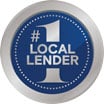Mortgage Refinance
Smart loan options,
new opportunities
Refinance with Hawaii's #1 residential lender today.+
Refinance with new mortgage terms
See rates and terms below. Get started by creating an account and applying for your mortgage refinance online.
Apply now Resume your application
Fixed Mortgage Refinance Rates
| Interest Rate |
|
Annual Percentage Rate |
|
Points |
|
Monthly Principal & Interest Payment per $100,000 borrowed | |
|---|---|---|---|---|---|---|---|
|
30 Year1 |
5.625% |
5.799% |
1.875% |
$575.662 |
|||
|
15 Year1 |
5.125% |
5.278% |
1.000% |
$797.322 |
Rates as of 01/02/2026 and can change without notice. Rate is based on a 60-day lock.
1 Maximum loan amount for these rates and terms is $1,249,125 for most Hawaii counties and Guam, except Maui and Kalawao where the maximum conforming loan limit is $1,299,500. Other options with different amounts, rates, and terms are available.
2 The information provided on this page is for informational and comparative purposes only. Rates and terms may change at any time and without prior notice. Your actual rate, payment, terms, and costs could be different. Get an official Loan Estimate before choosing a loan. Your rate, fees, and terms may differ based on various factors such as: when your rate is locked, actual occupancy status, loan purpose, loan amount, credit score, loan to value ratio, etc. The payment examples are principal and interest only and do not include mortgage insurance, taxes and other property insurance. The actual payment will be higher if mortgage insurance is required on your loan. Your actual payment obligation will be greater considering taxes and insurance premiums.

Local, digital, personal
Convenient online tools and trusted local experts to help guide you through the mortgage application process.

Applying with SimpliFi
With SimpliFiSM by Bank of Hawaii...
- Start your application from the comfort of home
- Speak with our local lending experts anytime throughout the process
- Use your mobile, tablet or desktop device to apply
- Upload your financial documents safely and securely
When you first click to apply, you'll need to create an account. Once you've created your account, you can begin your application. You can save your information and come back at any time to resume your application, provide follow up information and sign documents.
What you'll need initially:
- Pay stubs for most recent 30-day period.
- W-2s for the last 2 years.
- Tax returns for the last 2 years.
- Bank statements for most recent 2-month period or quarter.
Rate-and-term vs. cash-out refinancing
A cash out refinance lets you get a new mortgage for more than your current mortgage balance—based on the additional equity you've built up in your home since buying it. You pay off your existing mortgage, and are then able to use the extra money for whatever you'd like—home renovations, debt consolidation, medical bills, educational expenses, etc.
With a rate and term refinance, you pay off the balance of your mortgage with a new one that has a lower interest rate. In the process, you might also want to change the loan term, which is the number of years it will take to repay your loan. The main reason you might want to do this is to save money—either in the short-term, the long-term.
See our Insights article Refinancing 101: What are my options?
Calculating your refinancing break-even point
One way to decide if you should refinance your mortgage is to calculate how long it will take you to reach your break-even point, meaning the point at which the amount of your refinance savings equals the amount it cost you to refinance.
To calculate your break-even point, you'll need to answer three questions:
- How much is my current payment?
- How much will my new payment be?
- How much will it cost to refinance my mortgage?
Once you have these numbers (even just an estimate is a good starting point), simply divide the cost of refinancing by the difference between your old monthly payment and your new monthly payment. The answer will help you decide whether refinancing fits your overall plans and goals.
See our Insights article Refinancing 101: Should I refinance?
Understanding mortgage rates and points
With fixed-rate mortgages, the interest rate, and thus the monthly payment, is set at the time you take out the mortgage, and both remain constant throughout the course of your loan.
Adjustable-rate mortgages (or ARMs) usually have lower starting interest rates, compared with fixed-rate mortgages. However, with an adjustable-rate mortgage, your interest rate—and monthly payments—can change as interest rates fluctuate.
See our Insights article Adjustable-Rate or Fixed-Rate: Which Type of Mortgage is Right for You?
Mortgage points, sometimes known as discount fees or “paying down the rate,” are fees you pay your mortgage lender up front in exchange for a lower interest rate on your new mortgage. Paying points to your lender now allows you to pay less interest on your loan over time.
How to use a HELOC to refinance
Traditionally, homeowners use home equity lines of credits, or HELOCs, for home improvement projects, debt consolidation and to cover educational costs such as school tuition. But another smart use of a HELOC can be to pay off the remaining balance of your existing mortgage.
Even though you're taking out a line of credit rather than another closed-end mortgage, you can benefit from many of the same features a conventional refinance would offer, including:
- Interest rates that are competitive with current mortgage rates.
- Lower closing costs than a typical mortgage refinance.
- Repayment terms that are more convenient for your goals and budget—anywhere from 3, 5 or 7 years up to 15, 20 or 30 years.
- The ability to access cash by applying and qualifying for a HELOC larger than the remaining balance on your mortgage.
Read our article How to save money on your mortgage refinance
6 Big Benefits to Refinancing Your Mortgage
The Complete Guide to Refinancing a Home in Hawaii
Connect with a specialist
We’re here to help with all of your banking needs. Schedule a call at a time that’s convenient for you.


Trusted Lender
In 2024, Bank of Hawaii was the No. 1 local bank in total loan dollars for residential loans.+
+#1 Residential Lender ranking is for total loan dollars for residential loans made by a lender in the State of Hawaii in 2024. Information compiled by Title Guaranty derived from Hawaii Bureau of Conveyances tax data recorded information for 2024. Information is deemed reliable but not guaranteed.
You're about to exit BOH.com
Links to other sites are provided as a service to you by Bank of Hawaii. These other sites are neither owned nor maintained by Bank of Hawaii. Bank of Hawaii shall not be responsible for the content and/or accuracy of any information contained in these other sites or for the personal or credit card information you provide to these sites.



